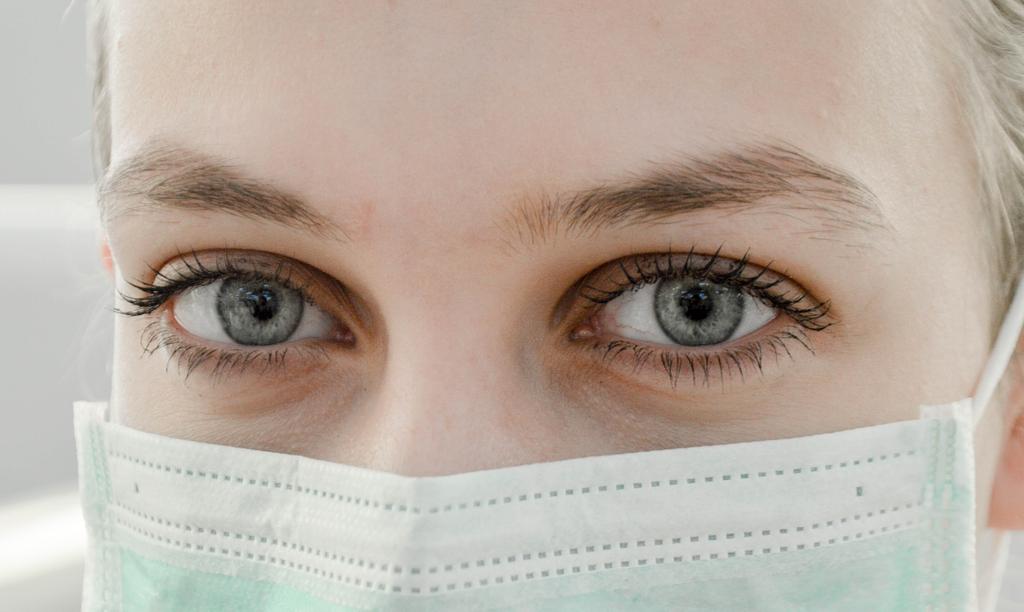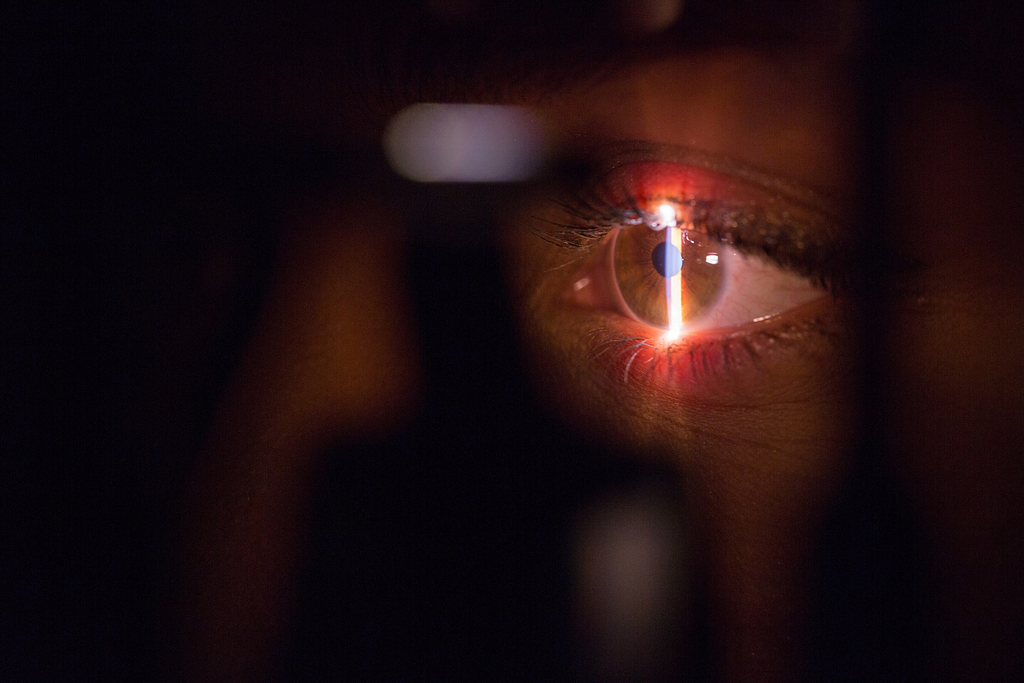.jpg)
In a patient with glaucoma who has unexplained hair loss, stop topical beta-blocker treatment
The Science behind the Tip Beta adrenergic receptor blocking eye drops are often used to reduce the intraocular pressure. Because of absorption...
May 31, 2017
.jpg)
Patients with normal tension glaucoma who develop a branch retinal vein occlusion should be monitored with greater care
The Science behind the Tip If a branch retinal vein occlusion (BRVO) occurs in a patient with normal tension glaucoma, it tends to occur in the eye...
April 30, 2017
.jpg)
Visual function may improve after trabeculectomy in some adults with moderately advanced glaucoma
The Science behind the Tip We were taught that visual field loss from glaucoma is irreversible and that our interventions could at best, preserve...
March 31, 2017
.jpg)
The regular (and sometimes clandestine) application of periocular corticosteroid cream can induce glaucoma in susceptible individuals
The Science behind the Tip Steroid-induced ocular hypertension and glaucoma is typically associated with topical steroid therapy and presents with...
February 28, 2017
.jpg)
In patients with primary angle-closure glaucoma and primary angle closure with high intraocular pressure (IOP), there is a good evidence to support the use of clear lens extraction with intraocular lens implantation as initial treatment
The Science behind the Tip The standard treatment for primary angle-closure glaucoma (PACG) is laser peripheral iridotomy (PI) to open the drainage...
January 31, 2017
.jpg)
Patients with neovascular glaucoma should be referred to a general physician as management of their underlying systemic disease should increase their life expectancy
The Science behind the Tip Most patients with neovascular glaucoma have retinal ischaemia secondary to either proliferative diabetic retinopathy,...
December 31, 2016
.jpg)
The risk of secondary haemorrhage after hyphaema can be reduced by using topical steroids and oral tranexamic acid
The Science behind the Tip A hyphaema is a common and usually innocuous consequence of blunt injury or ocular surgery. However, the secondary...
November 30, 2016
.jpg)
Despite the increased central corneal thickness (CCT) that may follow lamellar corneal surgery, reliable IOP measurements can be obtained with Goldmann applanation tonometry or Pascal dynamic tomography
The Science behind the Tip Lamellar corneal surgery (DSAEK, DMEK) is replacing penetrating keratoplasty, because visual recovery is better and...
October 31, 2016
.jpg)
In patients with pigment dispersion syndrome, YAG laser peripheral iridotomy can reduce the risk of raised intraocular pressure (IOP) in some patients, but does not prevent glaucoma
The Science behind the Tip Pigment dispersion syndrome arises from posterior bowing of the iris secondary to reverse pupil block. This causes...
September 30, 2016
.jpg)
An optic disc haemorrhage indicates ongoing structural change and is an important sign of progressive glaucoma
The Science behind the Tip Prospective studies have shown that splinter-shaped haemorrhages at the optic disc margin are an important risk factor...
July 31, 2016
.jpg)
Gradual intraocular pressure (IOP) elevation with a need for additional treatment is common in pseudophakic glaucoma patients following Nd; YAG laser posterior capsulotomy
The Science behind the Tip Nd: YAG laser capsulotomy is known to increase the IOP in some normal patients in the short term, with the maximum IOP...
June 30, 2016
.jpg)
Early detection of hypotony maculopathy is essential, as permanent chorioretinal changes and poor visual outcomes will occur without rapid surgical intervention
The science behind the tip Hypotony maculopathy is an uncommon but serious late complication of glaucoma filtration surgery, particularly when an...
May 31, 2016
.jpg)
In patients with glaucoma who require treatment for age-related macular degeneration or diabetic macular oedema, aflibercept may be a better choice of therapy than ranibizumab, as it is less likely to result in a delayed and sustained rise in IOP
The science behind the tip Anti - VEGF injection therapy for age-related macular degeneration or diabetic macular oedema may result in a delayed...
April 30, 2016
.jpg)
Beware of the patient who presents with acute angle closure and transient myopia, as this may occur as an idiosyncratic side effect of oral sulfonamides
The science behind the tip The normal mechanism of angle closure is pupillary block, which is treated with a laser peripheral iridotomy (PI)....
March 31, 2016
.jpg)
If a choroidal effusion develops after surgery in a patient with nanophthalmos then a partial thickness lamellar sclerectomy is an effective therapeutic option
The science behind the tip Raised IOP and secondary glaucoma are common late consequences of nanophthalmos (axial length less than 20mm)....
January 31, 2016
.jpg)
Patients with neovascular glaucoma secondary to ocular ischaemia syndrome need pan-retinal photocoagulation and urgent referral to a physician
The science behind the tip The cause of neovascular glaucoma in two thirds of patients is either proliferative diabetic retinopathy or an ischaemic...
December 31, 2015
.jpg)
Avoid the upper nasal quadrant when inserting an aqueous drainage implant, as it can result in acquired Brown syndrome
The science behind the tip Aqueous drainage tubes are commonly used in the surgical treatment of refractory glaucoma. New onset persistent diplopia...
November 30, 2015
.jpg)
Artifacts in the SD-OCT images in a patient with glaucoma or suspected glaucoma may lead to an erroneous conclusion
The science behind the tip Structural measurements of the optic disc and retinal nerve fibre layer (RNFL) have become an indispensable tool in the...
October 31, 2015
.jpg)
The ISNT rule is of limited benefit in differentiating early glaucoma from normal
The science behind the tip The ISNT rule states that a healthy optic disc has a characteristic configuration of the neuro-retinal rim; which is...
September 30, 2015
.jpg)
Patients with advanced glaucoma who are to undergo trabeculectomy should be warned that there is a small risk of permanent visual loss as a consequence of the surgery
The science behind the tip Transient visual disturbance after trabeculectomy is common and it can take several months for the vision to recover....
July 31, 2015
.jpg)
In clinical practice, anterior segment OCT cannot replace gonioscopy as a method of examining the filtration angle
The science behind the tip The diagnosis and management of all types of glaucoma is dependent on the accurate evaluation of the angle and its...
June 30, 2015
.jpg)
In every patient with ocular hypertension, search for signs of pseudoexfoliation syndrome as these patients are at significant risk of converting to glaucoma
The science behind the tip Patients with ocular hypertension and pseudoexfoliaton syndrome are twice as likely to convert to glaucoma as those...
June 30, 2015
.jpg)
Patients with progressive normal tension glaucoma may benefit from elevation of the head of the bed when they sleep
The science behind the tip Intraocular pressure (IOP) is significantly higher in the supine position than in the sitting position. Progressive...
April 30, 2015
.jpg)
RNFL measurement with SD OCT can contribute to glaucoma diagnosis, but only if prior clinical examination has yielded a relevant level of glaucoma suspicion
The science behind the tip It is well known that SD OCT can discriminate with reasonable accuracy between healthy volunteers and glaucoma patients...
March 31, 2015
.jpg)
In patients with narrow filtration angles or primary angle-closure glaucoma who have a patent laser iridotomy, it is safe to prescribe any systemic drugs which have an anti-cholinergic effect on the pupil
The science behind the tip Many commonly used systemic medications have been reported to cause acute congestive angle closure in individuals with...
February 28, 2015




.jpg)


.jpg)
.jpg)

